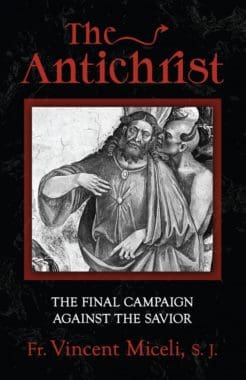St. Cyril of Jerusalem
St. Cyril was born in Jerusalem in AD 315, a few years before the outbreak of the Arian heresy. He lived to see its suppression by the Edict of Theodosius, 380, and to take part in its condemnation by the Council of Constantinople in the following year. He became bishop of Jerusalem and one of the most outstanding exponents of sacramental theology. But in his battles against Arianism, he was three times deposed and driven from Jerusalem, his See. During his third and longest forced exile—367–379—Jerusalem was given over to heresy and schism, to the violent strife of rival factions, and to extreme licentiousness in morals. St. Gregory of Nyssa, who was commissioned by a council held at Antioch in 378 to visit the Churches in Arabia and Palestine, “because matters with them were in confusion, and needed an arbiter,” has given an account of the prevailing corruption. “If divine grace were more abundant about Jerusalem than elsewhere, sin would not be so much the fashion among those who live there; but, as it is, there is no form of uncleanness that is not perpetrated among them; rascality, adultery, theft, idolatry, poisoning, quarreling, murder are rife.”
The major work of St. Cyril is his Catecheses, instructions for neophytes during Lent and Paschal-tide. It constitutes a major source for the “Liturgy of St. James,” the Syriac Liturgy. Cyril was deeply aware of Catholic unity, directing his hearers that on coming to a strange city or town they ought not to ask merely for the church, but for the “Catholic Church.” In the summer of 382 a synod of Eastern bishops met at Constantinople. From the synodal letter addressed from this body to the bishops assembled at Rome we read as follows: “Of the Church in Jerusalem, the Mother of all the Churches, we make known that Cyril, the most reverend and most beloved of God, is Bishop, and that he was canonically ordained long ago by the Bishops of the province, and that he has very often fought a good fight in various places against the Arians.” This justification by the synod is the last recorded incident in Cyril’s life. He died in 386. Here we will give his teaching on the Antichrist as it appears throughout his Catechetical Lectures.
Cyril of Jerusalem on the Antichrist
The Antichrist will be Christ’s counterfeit; he will be raised up by Satan to discredit the truth; a sorcerer’s sorcerer, he will perform many amazing deeds, all wondrous lies, by the art of sorcery. This great Deceiver is awaited eagerly by that race which rejected Christ as its king and Messiah. St. Cyril uses the same argument put forth by Irenaeus to prove this: “But if another shall come in his own name, him you will accept.” This other is the Antichrist, coming on his own authority and posing as the true Messiah.
In discussing the preparations for the coming of the Antichrist, Cyril emphasizes the deep moral decay of his own times. Hatred of the brethren is making room for the Antichrist; for the devil prepares beforehand the divisions among the people, and especially among Christians on what is true or false doctrine, good and evil morals. This very day there is a great falling away; thousands have abandoned the truth. The Church is filled with heretics in disguise who are the forerunners of the Antichrist. The true Christ comes from above, first in silence, weakness, and solitude, as a suffering Savior. But in His Second Coming He will come again from above, but this time with the blast of a trumpet as Judge in the glory of His Father, accompanied with legions of bright angels. On the other hand, the Antichrist comes from below, from the earth, a magician, expert in diabolical arts. He shall seize the power of the Roman Empire and falsely style himself the true Christ, deceiving the Jews, who are looking for an anointed one with a political kingdom, and seducing the Gentiles by his magical illusions. At first the Antichrist will put on a show of mildness, as though he were a learned and discreet person. He will act the part of a man of soberness and benevolence. But once he has established himself as totalitarian master of both Jews and Gentiles, he will drop the mask of benign graciousness. Then will begin his career of open crime, characterized by all kinds of heinous deeds and lawlessness. He will outstrip in maliciousness all the unrighteous, ungodly persons who have gone before him, displaying against all men, but especially against Christians, a murderous spirit driven on by a lust for cruelty. He will be a tyrant run amuck in the blood of the saints for three and one-half years.
In relating the Antichrist’s rise to world power, Cyril follows the traditional explanation of Daniel’s vision on this event. The reign of the Antichrist will begin when he gains control of the kingdoms that once made up the Roman Empire. Ten kings will be reigning in different areas of the empire. Then an eleventh king, the Antichrist, will arise and seize total power. Three of the kings he will conquer outright and the remaining seven he will win over to subjection to himself. The angel Gabriel explains the vision of the ten kings to Daniel thus: “The fourth beast shall be a fourth kingdom upon the earth, which shall surpass all kingdoms. And the ten horns of this beast are ten kings that shall arise; and another king shall rise up after them, who shall surpass in wickedness all who were before him . . . and he shall speak words against the Most High. A blasphemer the man is and lawless, not having the kingdom from his fathers, but having usurped the power by means of sorcery.”
The Antichrist and Rebuilding the Temple
An important event in the life of St. Cyril is his prediction of the failure of the Emperor Julian the Apostate to rebuild the Temple of Jerusalem. Julian, a contemporary of Cyril, had apostatized from the Faith as a student in Athens. Now as emperor he was attempting to restore ancient heathenism and galvanize it into some sort of glorious new life. In order to discredit the Christian belief that a sentence of everlasting destruction had been pronounced by Christ against the Temple, Julian aspired to restore its ancient glory. But the Christians put their faith in the words of Christ and were convinced Julian would fail in his attempt. The historian Rufinus records the fact that “lime and cement had been brought and all was ready for destroying the old foundations and laying the new.” After studying the prophecies in Daniel concerning the “times,” the predictions of our Lord in the Gospels, and the visions of St. John in the Apocalypse, Cyril remained certain that Julian, though a forerunner of the man of sin, was not the Antichrist. Hence, without any special private revelation, Cyril predicted that Julian would fail in his attempt to rebuild the Temple of Jerusalem, a feat that only the Antichrist was destined to accomplish. In that same year 363 Julian was killed in his Persian campaign and the whole project was abandoned by the new Emperor Jovian who, as a believer in the Nicene Creed, gave the Church a period of comparative peace.
Cyril emphasized the fact that the Antichrist alone, and no other potentate, would rebuild the temple of Jerusalem. For the Antichrist would abhor all other idols, wanting himself to be the only idol adored. Thus he must seat himself in his own rebuilt Temple as God. Coming to the Jews as their Christ, he would demand worship of them. That is why he would have to make a great account of the Temple, so as to completely beguile the Jews as a new Solomon rebuilding the House of God and calling it his own house. Cyril held that the Antichrist would come at a time when “there shall not be left one stone upon another in the Temple of the Jews.” As far as Cyril was concerned, that doom upon the Temple was not yet accomplished in his day, nor did he expect it be completed until the coming of the Jewish Antichrist who would restore the Temple shortly before the end of the world. For Cyril could see that the old Temple, destroyed by the Romans under Titus, still had stones upon stones. Hence Cyril expected events of nature and history—earthquakes, storms, floods, new building projects, the decay of time, etc.—to destroy slowly all the stones of the old Temple. Once this happened, another sign heralding the advent of the Antichrist would have been accomplished. However, it was Cyril’s conviction that the final destruction of the Temple of Jerusalem, that rebuilt by the Antichrist, would take place only at the Second Coming of Christ, at the end of the world. Only then would the prophecy of our Lord, as stated in Matthew, “not a stone will be left upon a stone,” actually be fulfilled.
+
This article is adapted from a chapter in The Antichrist by Fr. Vincent Miceli, S.J. which is available from Sophia Institute Press.
Art for this post: Cover and featured image used with permission.





